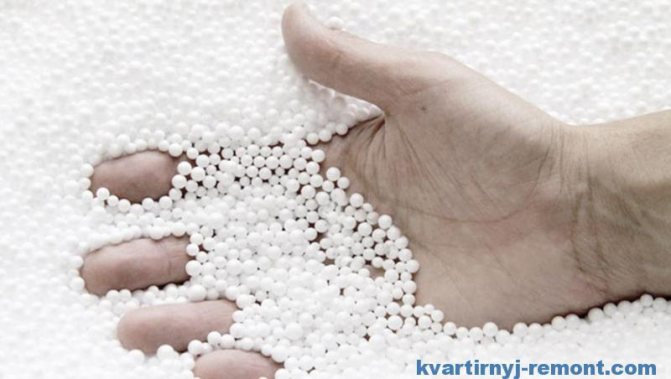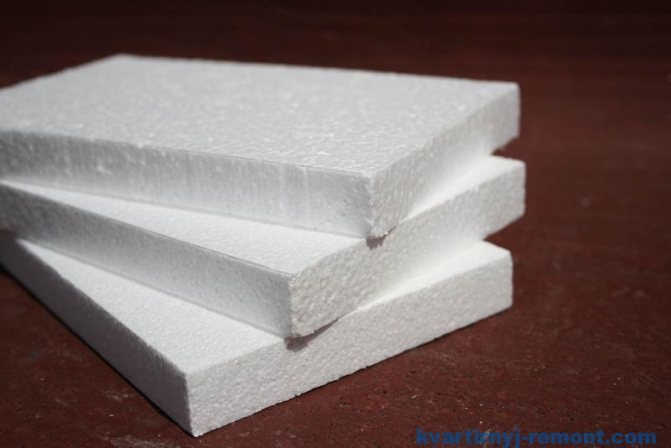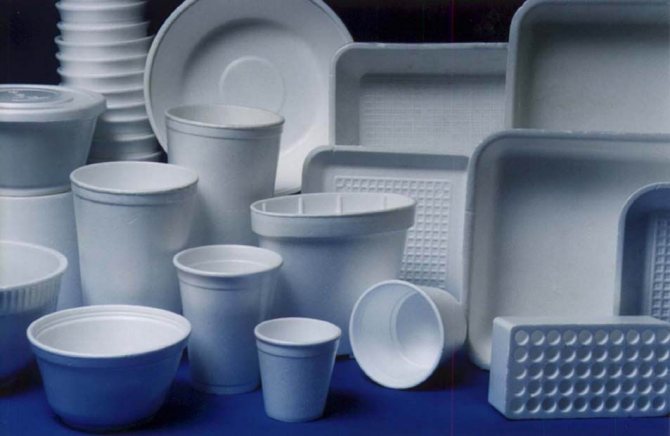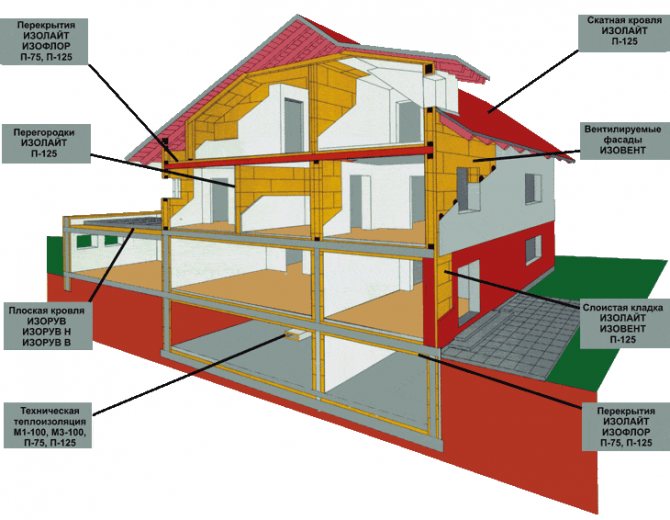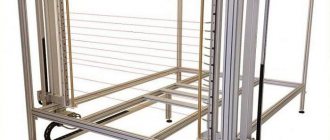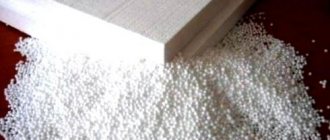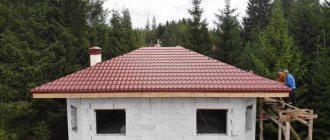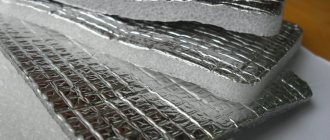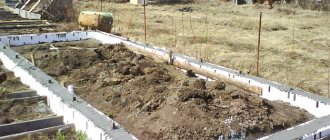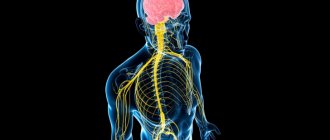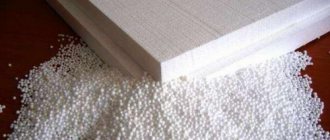All stages of the foam plastic production technology are considered. The equipment required to make this material is listed. Recommendations are given, which you must definitely familiarize yourself with before buying.
Many of us have met polystyrene foam more than once, tried it by touch, made something from it, used it in construction, for home improvement. However, not everyone knows what the technology of making foam plastic is, what are its features.
Oddly enough, but in the production of this material there is nothing super complicated. And it is noteworthy that now a lot of low-quality polystyrene foam has appeared on the market, which is made without taking into account the relevant rules and regulations.
Some craftsmen manage to create a small production line even in a regular garage. Yes, don't be surprised.
And this must be taken into account when buying - not all Vasya Pupkins strictly adhere to the prescribed technological standards. And what standards can there be in the garage?
Properties
The degree of polymerization of commercially available polystyrene n = 600-2500, the polydispersity coefficient M w / M n = 2 - 4 {\ displaystyle M_ {w} / M_ {n} = 2-4} (M w {\ displaystyle M_ {w}} Is the weight average, M n {\ displaystyle M_ {n}} is the number average molecular weight). Depending on the method of synthesis and the degree of polymerization, the flow index is 1.4-30 grams per 10 minutes, the softening temperature (Vicat, 200 MPa) 97 ° C for amorphous and 114 ° C for partially crystallized polystyrene [1].
Phenyl groups prevent the ordered arrangement of macromolecules and the formation of crystalline formations.
Polystyrene is a tough, brittle amorphous polymer with a high degree of optical light transmission and low mechanical strength. Polystyrene has a low density (1060 kg / m³), shrinkage during injection molding is 0.4-0.8%. Polystyrene has excellent dielectric properties and good frost resistance (down to −40 ° C). Has a low chemical resistance (except for dilute acids, alcohols and alkalis).
It dissolves in carbon disulfide, pyridine, acetone, toluene, dichloroethane, chloroform, carbon tetrachloride, esters, and more slowly in gasoline [2]. Insoluble in water. Thermoplastic material. Polystyrene is easy to mold and paint. Well processed by mechanical means. It sticks well. Possesses low moisture absorption, high moisture resistance and frost resistance.
At strong (above 300 ° C) heating, polystyrene decomposes with the release of monomer (styrene) vapors [3] and other decomposition products of polymer chains. In the air burns with a yellow smoky flame.
How to choose equipment for the production of expanded polystyrene?
If you decide to make your own styrofoam, you need to choose the right equipment for the workshop. Select the components of production equipment based on the volume of products you plan.
For example, if the required amount of material is no more than 1000 cubic meters per month, you need a line with a capacity of 40 cubic meters per shift. She will be able to give this volume of foam.
Please note that the estimated line capacity may not match the real one. It depends on the following points:
- The most important factor - the origin of raw materials: imported or domestic. On Russian pellets, the productivity may decrease slightly.
- Second nuance - the grade of foam that you will be producing. So, PSB-12 expanded polystyrene has a density of less than 12 kg per cubic meter. Therefore, it can only be obtained by double foaming. This reduces the line performance.
It is better to choose equipment for the production of foam, which has a high performance. It is not worth operating a low-power line at the limit of its capabilities, it may soon fail.
How to choose a steam generator?
The steam source is a steam generator (steam boiler). Its minimum capacity should be 1200 kg per shift. However, it is advisable to purchase a steam boiler with a higher capacity. This will make it possible to further improve the performance of the equipment.
Receiving
Industrial production of polystyrene is based on radical polymerization of styrene. There are 3 main ways to obtain it:
Emulsion (PSE)
The most outdated method of obtaining, not widely used in production. Emulsion polystyrene is obtained as a result of styrene polymerization reaction in an aqueous solution of alkaline substances at a temperature of 85-95 ° C. This method requires styrene, water, an emulsifier and a polymerization initiator. Styrene is preliminarily purified from inhibitors: treblytil-pyrocatechol or hydroquinone. Water-soluble compounds, hydrogen dioxide or potassium persulfate are used as initiators of the reaction. Salts of fatty acids, alkalis (soap), and sulfonic acid salts are used as emulsifiers. The reactor is filled with an aqueous solution of castor oil and, while thoroughly mixing, styrene and polymerization initiators are introduced, after which the resulting mixture is heated to 85-95 ° C. The monomer dissolved in the soap micelles begins to polymerize from the emulsion droplets. As a result, polymer-monomer particles are formed. At the stage of 20% polymerization, micellar soap is consumed for the formation of adsorbed layers, and the process then proceeds inside the polymer particles. The process ends when the free styrene content is less than 0.5%. Further, the emulsion is transported from the reactor to the precipitation stage in order to further reduce the residual monomer, for this the emulsion is coagulated with a solution of sodium chloride and dried, obtaining a powdery mass with a particle size of up to 0.1 mm. Residues of alkaline substances affect the quality of the resulting material, since it is impossible to completely eliminate impurities, and their presence gives the polymer a yellowish tint. This method can be used to obtain polystyrene with the highest molecular weight. Polystyrene obtained by this method has the abbreviation PSE, which is found in technical documentation and old textbooks on polymeric materials.
Suspension (PSS)
The suspension method of polymerization is carried out in a batch mode in reactors with a stirrer and a heat-removing jacket. Styrene is prepared by suspending it in chemically pure water using emulsion stabilizers (polyvinyl alcohol, sodium polymethacrylate, magnesium hydroxide) and polymerization initiators. The polymerization process is carried out with a gradual increase in temperature (up to 130 ° C) under pressure. The result is a suspension, from which polystyrene is isolated by centrifugation, then it is washed and dried. This method of producing polystyrene is also outdated and is most suitable for producing styrene copolymers. This method is mainly used in the production of expanded polystyrene.
Block or bulk (PSM)
There are two schemes for the production of general-purpose polystyrene: full and incomplete conversion. Thermal polymerization in bulk according to a continuous scheme is a system of 2-3 column reactors connected in series with stirrers. Polymerization is carried out in stages in a benzene environment - first at a temperature of 80-100 ° C, and then in a stage of 100-220 ° C. The reaction stops when the degree of conversion of styrene to polystyrene is up to 80-90% of the mass (with the method of incomplete conversion, the degree of polymerization is brought to 50-60%).Unreacted styrene-monomer is removed from the polystyrene melt by evacuation, reducing the content of residual styrene in polystyrene to 0.01-0.05%, unreacted monomer is returned to polymerization. Polystyrene obtained by the block method is characterized by high purity and stability of parameters. This technology is the most efficient and has practically no waste.
Output
Polyfoam can be produced from granules of various sizes and origins. There are grades of different density and thickness on the market, so take this into account when purchasing the material.
When choosing equipment for the production of expanded polystyrene plates, take into account its type, performance, completeness and level of automation. This directly affects the volume and quality of the material produced.
The video in this article will help you better understand the topic. If something remains unclear to you, ask questions in the comments.
- Expanded polystyrene foam... Raw materials are placed in a special container, where the material is treated with steam of low-boiling liquids. As a result of foaming, the granules expand in volume from 20 to 50 times. After reaching the required level of granules, the steam flow stops, and the working material is removed from the tank. The process itself takes about 4 minutes.
- Maturation... After drying, the material is sent to a special maturation bin, according to the brand (15, 25, 35 and 50), where the maturation process takes place. The time of the whole procedure takes from 4 to 12 hours, depending on the size of the granules and the environment t.
- Curing blocks... The prepared blocks are sorted by brands and stored. At first, the blocks can still give off the remaining moisture. The ripening period of the blocks takes from 12 to 30 days.
- Cutting foam blocks. On a special foam machine, string cutting of foam blocks into plates of specified dimensions is performed. Standard sizes are 20, 30, 40, 50 and 100 mm, other sizes are possible as well.
Application

High impact polystyrene yoghurt cup
It is produced in the form of transparent cylindrical granules, which are processed into finished products by injection molding or extrusion at 190-230 ° C. The widespread use of polystyrene (PS) and plastics is based on its low cost, ease of processing and a huge range of different brands.
The most widespread use (more than 60% of the production of polystyrene plastics) was obtained by impact-resistant polystyrenes, which are copolymers of styrene with butadiene and styrene-butadiene rubber. Numerous other modifications of styrene copolymers have been created.
A wide range of products is produced from polystyrene, which are primarily used in the domestic sphere of human activity (disposable dishes, packaging, children's toys, etc.), as well as in the construction industry (thermal insulation plates, fixed formwork, sandwich panels), facing and decorative materials (ceiling molding, ceiling tiles, polystyrene sound-absorbing elements, adhesive bases, polymer concentrates), medical direction (parts of blood transfusion systems, Petri dishes, auxiliary disposable instruments). Foaming polystyrene after high-temperature treatment with water or steam can be used as a filtering material (filter nozzle) in column filters for water treatment and wastewater treatment. High electrical performance of polystyrene in the field of ultrahigh frequencies makes it possible to use it in the production of: dielectric antennas, coaxial cable supports. Thin films (up to 100 microns) can be obtained, and in a mixture with copolymers (styrene-butadiene-styrene) up to 20 microns, which are also successfully used in the packaging and confectionery industries, as well as in the production of capacitors.
High-impact polystyrene and its modifications are widely used in the field of household appliances and electronics (housing elements of household appliances).
Military industry
The extremely low viscosity of polystyrene in benzene, which makes it possible to obtain still mobile solutions even in extreme concentrations, [4] led to the use of polystyrene in one of the napalm varieties [5] as a thickener, the viscosity-temperature dependence of which, in turn, decreases with an increase in the molecular weight of polystyrene [4].
Conclusions on the manufacture of foam
- The technology is quite simple, but it requires mandatory compliance with all prescribed rules and regulations.
- Material (which outwardly will be similar to quality) can be obtained even with significant deviations from the production rules. And this is used by "handicraft" firms (bad people).
Therefore: buy only products from reliable, trusted manufacturers (who monitor quality)... Check the vendors for the appropriate quality certificates.
Now you know how foam is made, you know the main features of the manufacturing technology and which material you need to give preference to. Good luck!
Foam plastic is used very widely - it is indispensable as a heat-insulating, finishing and packaging material. What is he like? How is foam production carried out, what raw materials and equipment are used? Let's figure it out!
Recycling
Polystyrene is believed to be environmentally friendly. [6]
Processing
Polystyrene waste is accumulated in the form of obsolete products from PS and its copolymers, as well as in the form of industrial (technological) wastes of general-purpose PS, impact-resistant PS (HIPS) and its copolymers. Recycling of polystyrene plastics can go in the following ways:
- utilization of highly contaminated industrial waste;
- utilization of technological waste HIPS and ABS plastic by injection molding, extrusion and pressing;
- disposal of worn-out products;
- disposal of polystyrene foam (EPS) waste;
- recycling of mixed waste.
Also, polystyrene concrete is created from polystyrene, which is used for the construction of low-rise buildings.
Burning
When polystyrene is burned, carbon dioxide (CO2), carbon monoxide (CO - carbon monoxide) and soot are formed. Combustion of polystyrene containing additives (e.g. dyes, strength-enhancing components, etc.) may result in the release of other harmful substances
.
Thermal destruction
Decomposition products of polystyrene formed during thermal destruction and thermal oxidative destruction, toxic
... When processing polystyrene, as a result of partial destruction of the material, vapors of styrene, benzene, ethylbenzene, toluene, carbon monoxide can be released. [6]
Types and markings of polystyrene and its copolymers
The following standard abbreviations are used around the world:
- PS - polystyrene, polystyrene (PS)
- GPPS - general purpose polystyrene (general purpose polystyrene, non-impact resistant, block, sometimes called "crystalline", PSE, PSS or PSM marking depends on the method of production)
- MIPS - medium-impact polystyrene
- HIPS - high-impact polystyrene (high-impact, HIPS, UPM)
- EPS - expanded polystyrene
- The abbreviation MIPS is used relatively rarely.
Styrene copolymers:
- ABS - Acrylonitrile-butadiene-styrene copolymer (ABS plastic, ABS copolymer)
- ACS - Acrylonitrile-chloroethylene-styrene copolymer (AHS copolymer)
- AES, A / EPDM / S - Copolymer of acrylonitrile, EPDM and styrene (AES copolymer)
- ASA - Copolymer of acrylic ether, styrene and acrylonitrile (ASA copolymer)
- ASR - High impact styrene copolymer (Advanced Styrene Resine)
- MABS, M-ABS - Copolymer of methyl methacrylate, acrylonitrile, butadiene and styrene, transparent ABS
- MBS - Methyl methacrylate-butadiene-styrene copolymer (MBS copolymer)
- MS, SMMA - Copolymer of methyl methacrylate and styrene (MS)
- MSN - Copolymer of methyl methacrylate, styrene and acrylonitrile (MSN)
- SAM - Copolymer of styrene and methylstyrene (CAM)
- SAN, - AS - Copolymer of styrene and acrylonitrile (SAN, CH)
- SMA, S / MA - Styrene-maleic-anhydride copolymer
Styrene copolymers - thermoplastic elastomers:
- ESI - Ethylene Styrene Interpolymer
- SB, S / B - Styrene-butadiene copolymer
- SBS, S / B / S - Styrene-butadiene-styrene copolymer
- SEBS, S-E / B-S - Styrene-ethylene-butylene-styrene copolymer
- SEEPS, S-E-E / P-S - Styrene-ethylene-ethylene / propylene-styrene copolymer
- SEP - Styrene-ethylene-propylene copolymer
- SEPS, S-E / P-S - Styrene-ethylene-propylene-styrene copolymer
- SIS - Styrene-isoprene-styrene copolymer
